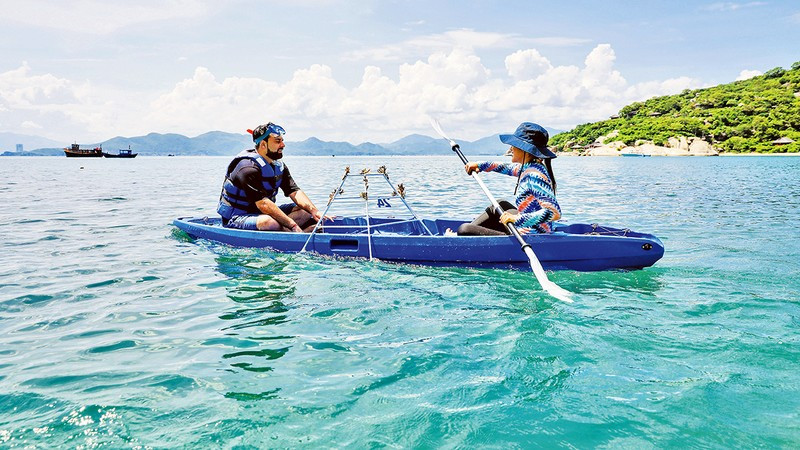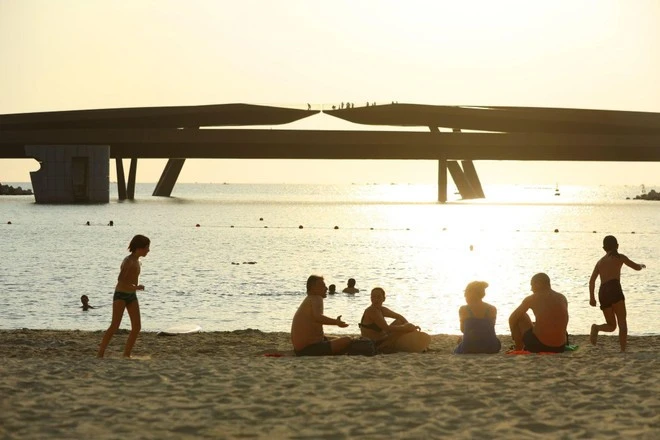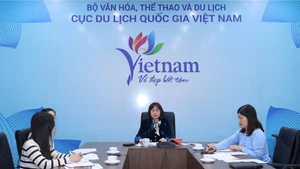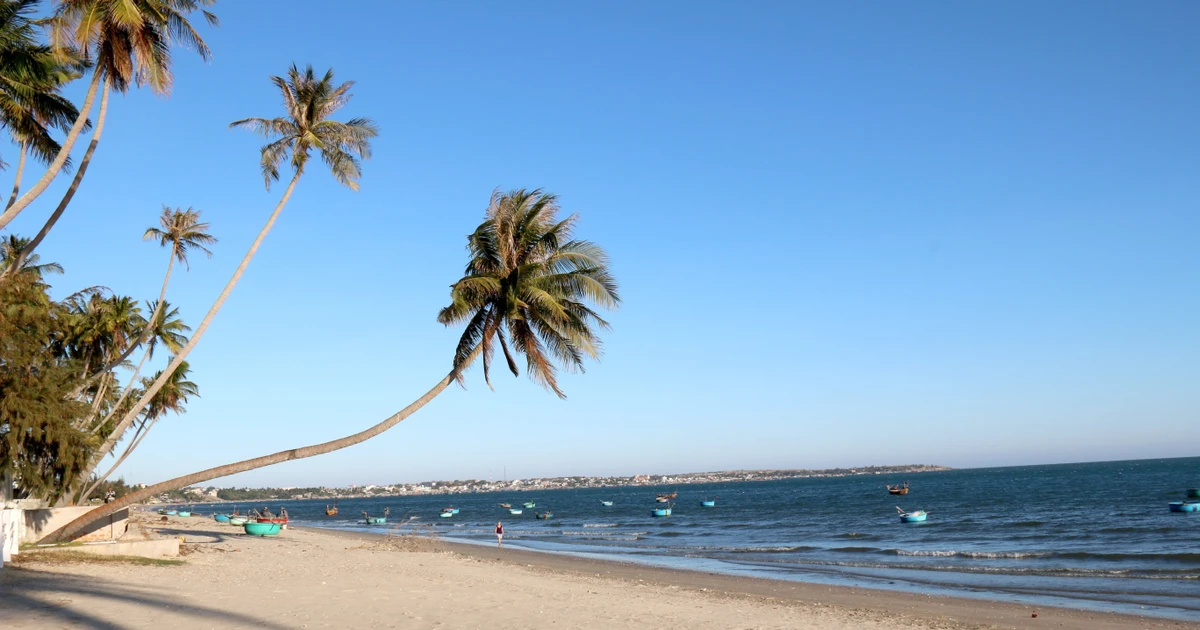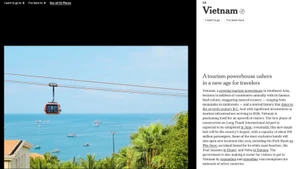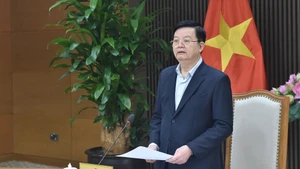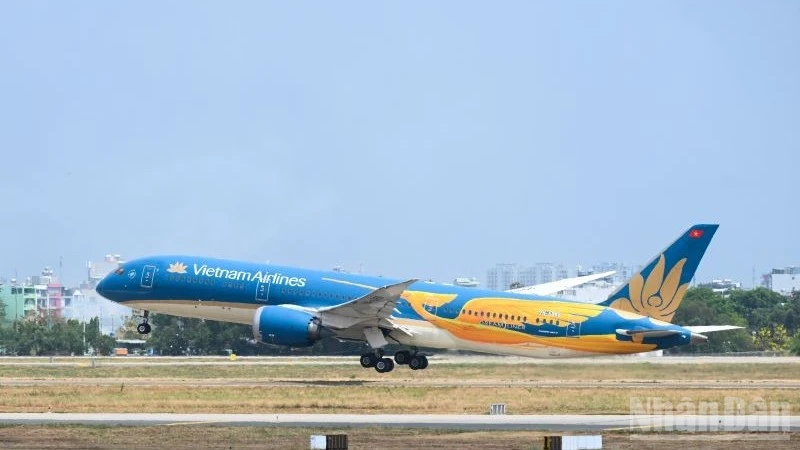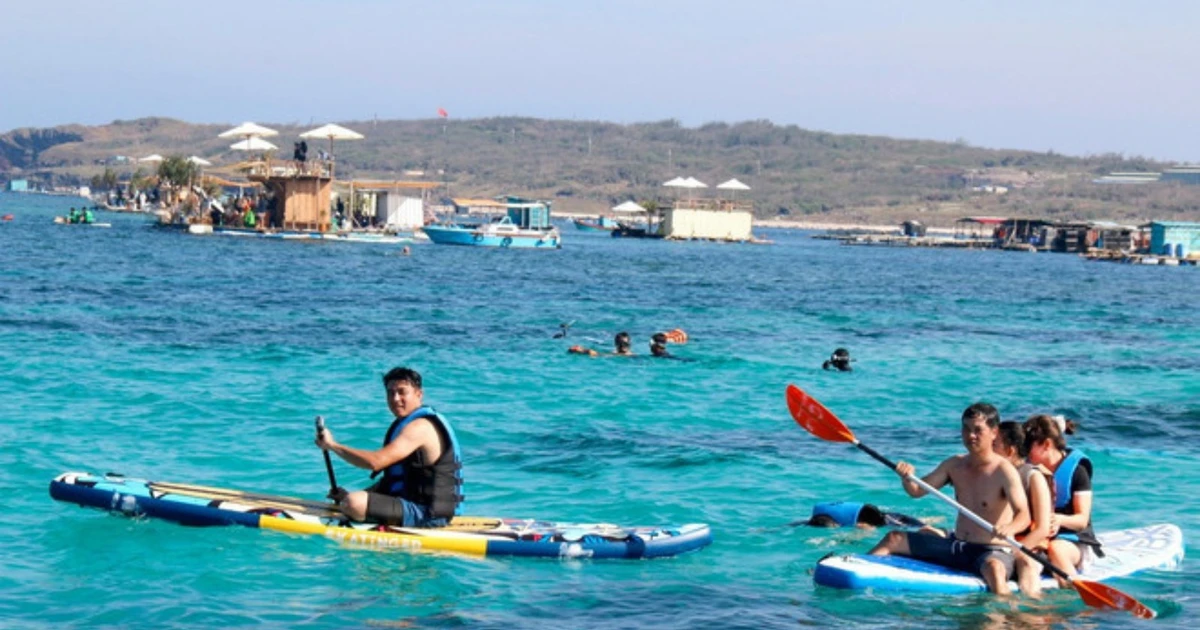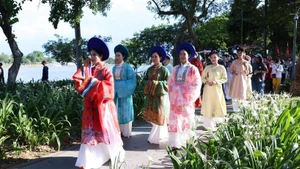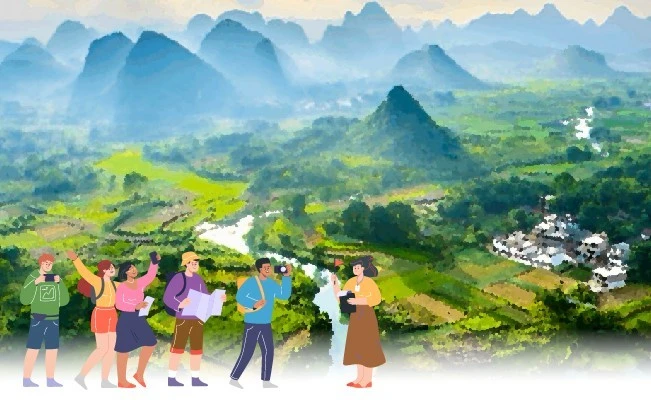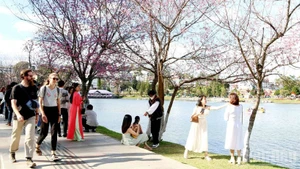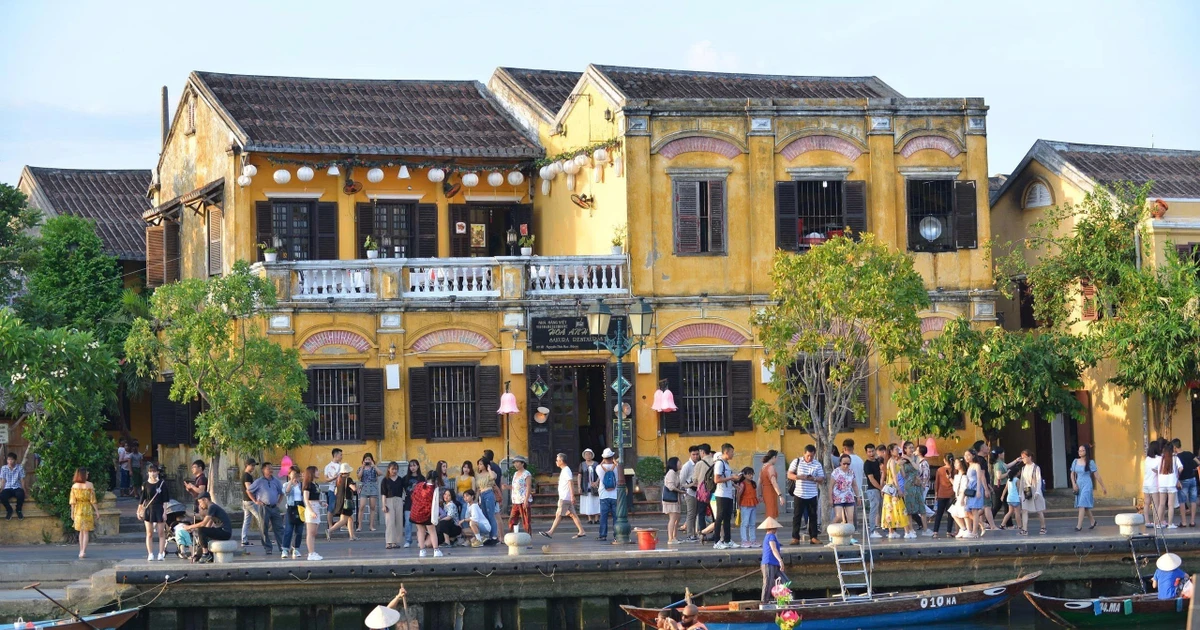The steps to open prospects
Following young tour guide Dinh Tien Dat from Viet Community Enterprise Development Joint Stock Company (VietED), visitors can come to Giang Bien, a suburban area in Long Bien District, Hanoi. Visiting Nguyen Thi Nam's garden to harvest clean and ripe tomatoes that can be eaten immediately is really a great experience. Visitors can also feel excitement when joining in the stages of cooking ‘banh duc’ (a steamed rice cake) at Vu Van Truong's house, as well as braiding rope and learning about the traditional hammock making craft at Nguyen Thi Hoai Nam's house. These are all interesting activities within the agricultural tourism model, VietHarvest AgriTour, which was developed from the community project entitled "Improving the livelihoods of farmers in suburban areas of Hanoi — Agricultural tourism as a business supporting diversification of income sources”. The project was implemented by VietED and sponsored by the Asia Foundation and GSRD Foundation.
Launched after nearly 20 months of development, the model has currently attracted 18 households in Giang Bien Ward to participate with various tours,including “One day as a farmer”, Agriculture semester (1 day), and Green Living - Healthy Living (2 days 1 night). The tours take visitors to experience the works of farmers combined with visiting historical and cultural relic sites and immersing themselves in the beautiful nature of Giang Bien. Nguyen Tri Thanh from the Asia Foundation said that before designing tours, the project's experts spent many years supporting local people to improve technical farming methods to grow clean vegetables, thus helping to improve productivity and ensure food hygiene and safety. When completing the designs of tourism products, the group of experts also conducted training, testing, and transfer of knowledge so that farmer households can operate and develop in a sustainablemanner. With this approach, the green agricultural tourism model in Giang Bien is expected to become a model for replication in rural areas of Vietnam in the next 5 years.
Also aiming to develop green tourism, Six Senses Ninh Van Bay Resort located in Ninh Van Bay (Khanh Hoa Province), which is home to many rare animal species, has a unique approach to development of green tourism through the establishment of the Sustainable Development Fund. Nguyen Uyen, Marketing and Communications Manager at Six Senses Ninh Van Bay, said the fund has been operating since 2015 using a portion of the resort's monthly revenue, and is used for projects of conserving the ecosystem and improving the quality of local people’s lives and the living environment for wildlife populations in the Hon Heo area. For example, working with the non-governmental organisation GreenViet, the resort has been implementing a project on the conservation of the black-shanked douc langur, an endangered primate species in Vietnam's red book. As a result, 17 langur families have been protected, with the number of langur individuals increasing from 109 in 2019 to 157 individuals today. Through the project, the guests staying here can join in a climbing journey to explore the wild life of langurs along with conservation experts while exploring amazing nature.
In addition, thanks to the support from the Nha Trang Oceanography Institute, Six Senses Ninh Van Bay restored 500 square metres of coral reef on Ninh Van Bay, achieving a positive result with a success rate of 91%. On this basis, the resort has included coral planting activities in tourists' travel itineraries to raise public awareness of biodiversity conservation and expansion of natural coral areas. The revenue from these green tourism activities has been put into the Sustainable Development Fund to maintain and develop projects. The many domestic and foreign tourists coming to the resort not only want to admire and explore the wild natural beauty, but also want to have the opportunity to directly contribute to community development projects and the preservation of the area’s ecosystem. Recently, the Sustainable Development Fund model of Six Senses Ninh Van Bay was honoured in the Sustainable Project category of the Human Act Prize 2023 which was organised by Nhan Dan Newspaper.
Although the investment in green tourism costs a lot of money, effort, and time, it can be seen that many localities, accommodation establishments, and travel companies across the country have been making efforts to realise this sustainable path. Quang Nam is the first destination to have issued a set of criteria for green tourism. Co To Island District (in Quang Ninh Province) has applied a pilot regulation requiring tourists not to bring plastic bottles, nylon bags, nor materials that pose a risk of environmental pollution. A number of green tours have been forming and affirming their brands. Many tourism businesses have also converted their operations to models of saving water and electricity and reducing plastic waste. These are positive signs marking the formation of the green tourism trend in Vietnam, opening the prospects for making Vietnam into a green tourism destination in the region and the world.
 |
| Tourists are picking tomatoes at Giang Bien farm. (Photo: Linh Tam) |
Encouraging green thinking and green actions
According to the Sustainable Tourism Report published by the Booking.com platform at the end of April 2023, up to 97% of Vietnamese tourists want to have more sustainable travel experiences, 52% of whom are willing to pay for green tourism and environmental protection activities. It is clear that green tourism is not only an inevitable requirement of the tourism industry, but also a demand of modern tourists as well as a solution to increase the number of tourists with high spending and civilised awareness and behaviour when traveling. Vietnam's Tourism Development Strategy until 2030 has determined to develop Vietnam's tourism with a sustainable and inclusive orientation on the foundation of green growth and maximising the contribution of tourism to development goals. The strategy also offers many othersolutions, including applying digital technology and green and clean technology in tourism business to improve pollution control capacity; ensuring effective prevention, reduction, and treatment of pollution sources from tourism activities; and encouraging tourism service establishments to use clean and renewable energy and recycled and reused products, and apply clean technology to limit environmental pollution and reduce greenhouse gas emissions.
Vice Chairman of the Vietnam Society of Travel Agents (VISTA) Phung Quang Thang stressed that in addition to raising public awareness of green tourism development, it is crucial to review Vietnam's green tourism development criteria and promulgate an appropriate set of criteria for the new context towards making specific instructions for localities to uniformly apply and easily detail appropriate green tourism criteria. Vietnam also needs to have more preferential policies to encourage the development of green tourism, including supporting green tourism training programmes for our guides, hotel owners, restaurant owners, artisans, and local communities; helping the formation of links and cooperation between tourism businesses and localities and communities to develop and manage green tourism activities; supporting tourist flow management and overcoming seasonality in tourism to reduce destination overload; deploying a communication strategy to share successes and challenges; and issuing more practical policies to increase green tourism credit. These solutions will contribute to creating momentum for Vietnamese tourism to create breakthroughs on the journey to affirm its brand as a green destination on the tourism map in the region and the world.
